It’s been awhile for this project, no? Our last entry, Egypt, was back in December 2021! Like all my projects, this one hovers in my mind, and it stalled out when I couldn’t find one of the key ingredients for many dishes in El Salvadoran cuisine, the papa del aire, or chayote. It was just an excuse, I’m not sure why, this is actually, of all my projects, one of my faves. So, here we are, with our third entry in Central America.
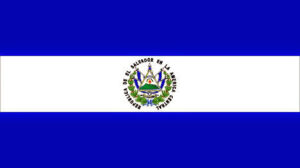 Located on the Pacific coast of Central America, the country has a similar past to many of those in the region – independent, though under no particular name, as part of various “empires”, until Spanish colonization. Various shifts in which viceroyship it was administered under, various unions with Mexico, then most of Central America, then a union with Honduras and Guatemala as the Greater Republic of Central America, and finally, independence in 1898. Lots of political upheaval for decades, culminating, finally, in a relatively stable constitutional republic only in 1992!
Located on the Pacific coast of Central America, the country has a similar past to many of those in the region – independent, though under no particular name, as part of various “empires”, until Spanish colonization. Various shifts in which viceroyship it was administered under, various unions with Mexico, then most of Central America, then a union with Honduras and Guatemala as the Greater Republic of Central America, and finally, independence in 1898. Lots of political upheaval for decades, culminating, finally, in a relatively stable constitutional republic only in 1992!
Geographically, the country is slightly over 8000 square miles in area, making it a little smaller than New Jersey. It’s population is around 6.5 million is about 2/3 that of the Garden State. The vast majority of the population, 86%, are mestizo, a mix of indigenous and European descent. Unlike many Latin American countries, it is not predominately Catholic – only about 44% – with about 37% Protestant, and about 15% who declare “no religion”. In the early 2000s, El Salvador switched its former currency, the colón, to the US dollar.
Salvadoran cuisine relies heavily on corn. Yuca also has a strong presence. Not suprisingly, the cooking has its roots in the various indigenous cultures of the region – Lenca, Pipil, Maya Poqomam, Maya Ch’orti’, Alaguilac, Mixe, and Cacaopera peoples – along with European, particularly Spanish, influences. Curtida, a cabbage based, vinegary slaw, is near ubiquitous on the table. For our “bread”, it was a near automatic choice, the Pupusa, a stuffed cornmeal flatbread. Mine were a bit of a disaster (physically, though they tasted good), one day, I’ll seek out someone to really show me how to make them. The soup was not as easy to decide, as there are numerous ones that are found throughout the country, and in the end, I picked one that just sounded tasty, Sopa de Res, or Beef Soup.
Pupusas are, as noted, stuffed. And, one needs to make the stuffings. The first, refried beans. We have cooked red beans, a little onion, garlic, and a melty cheese like mozzarella.
Saute the onions and garlic in a little oil until browned.
Then blend them with the beans, yes, in your blender, or food processor. Return to the pan with a little more oil.
And cook down until they form a thick paste. Mix in the cheese and combine well. Set aside to cool.
Next, we have our chicharrón mixture, or pork cracklings. We also need onion, tomato, and a jalapeño or similar chili.
In your blender, grind the pork cracklings to a powder, then add in the other three ingredients and blend to make a paste.
Fry that in a bit of oil for a few minutes – just to make sure the onions and chili are cooked through. Set aside to cool.
And, we have nixtamalized cornmeal and water. Here’s where I think I screwed up, as several of the recipes I was looking at warned against the mixture being too wet. I think I overcompensated and made it too dry.
And here we have our masa, or dough, for the pupsas along with the bean and pork crackling mixtures. Also, our curtiba, a mix of shaved cabbage, red onion, carrot, salt, and vinegar.
I’m sure anyone who makes pupusas will look at these and say – nope, not right. Too crumbly, and probably too thick.
Probably too much filling as well, but so be it. I split the two fillings between the five I was making. Then made some vague attempt to mold the whole thing into a closed packet that just didn’t really work…
So they came out more like sandwiches of the masa with the two fillings in the middle. Not at all what I was hoping for visually. But hey, first attempt. I also have the feeling that I was supposed to dry griddle these rather than fry them. Things to figure out, though likely, I won’t… moving on.
On to our Sopa de Res. We have… beef shortribs and oxtails, zucchini, yuca, corn, carrot, chayote, green beans, onion, lime, and cilantro. Not pictured, beef stock, salt and pepper, vegetable oil.
Brown the pieces of meat and the chopped onion in a little oil.
Add the beef stock, bring to a simmer, and cook for about an hour and a half, until the meat is nice and tender.
Add everything else except the lime – cut up into pieces. Obviously the yuca needs to be peeled – details on how to do that here. And the chayote needs to have its seed removed. You can peel it or not, the peel is edible after boiling, so it’s not strictly necessary. The cilantro is also chopped, and added at this point too, rather than later. Infuses the flavor more thoroughly. Bring back to a simmer and cook for about half an hour more, until the vegetables are all cooked through.
And, you have your soup. Finish with the lime juice. Adjust your seasoning (I didn’t find it necessary, but then, my beef stock was pretty well seasoned).
And, serve. The pupusa gets topped with a bit of the curtiba. And, in this view, it doesn’t look quite as lame as in the above photo.
Loved the soup. I think I might reserve a little of the cilantro to add back in at the end, just to give it a little herbal brightness. And, while I loved the flavor of the pupusa, it will clearly take practice to make the masa and shape them, which I probably won’t do unless someone wants to drop by and show me how to make them right.
Next time, we move from Central America to Central Africa, and explore Equatorial Africa.
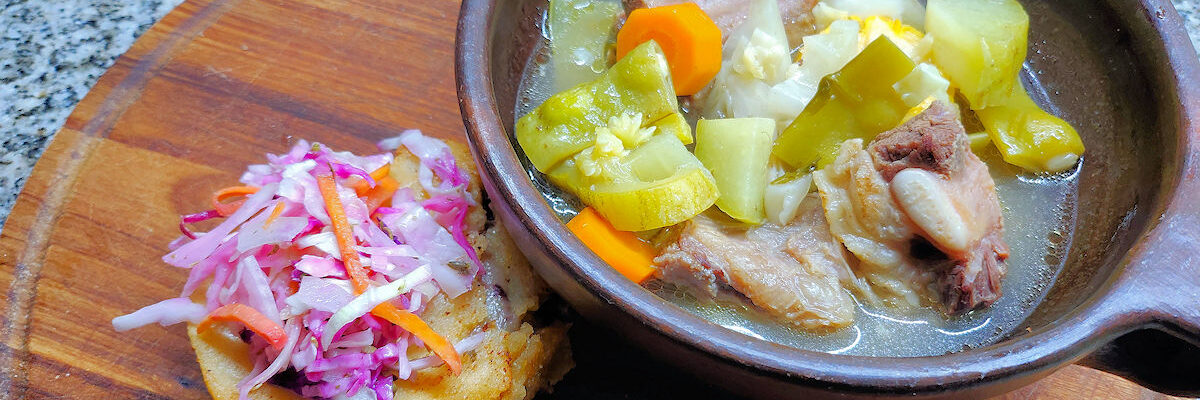
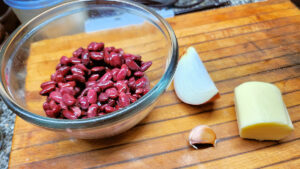
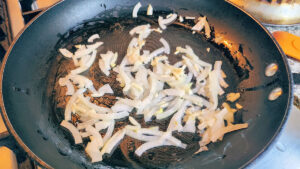
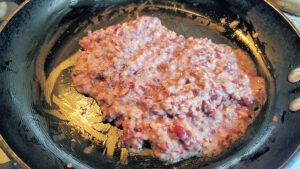
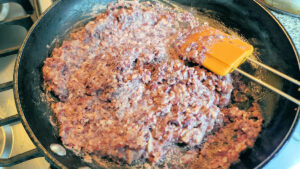
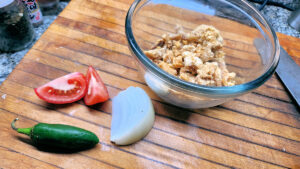
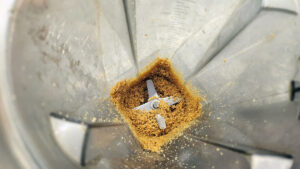
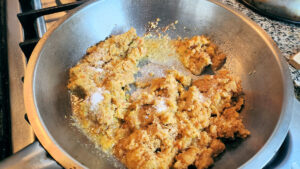
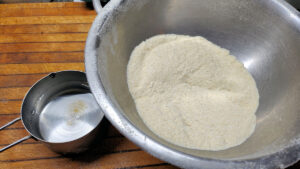
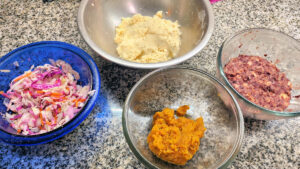
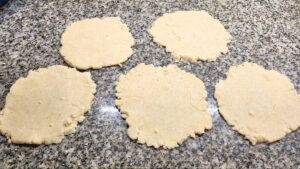
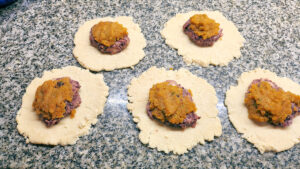
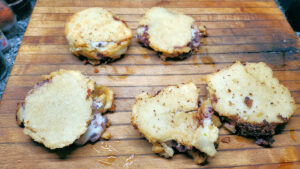
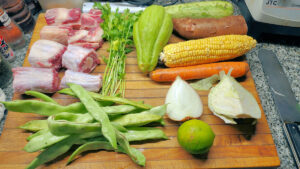
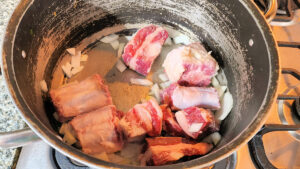
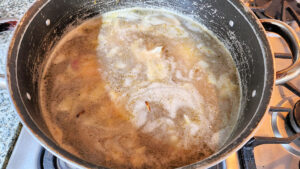
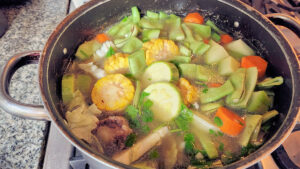
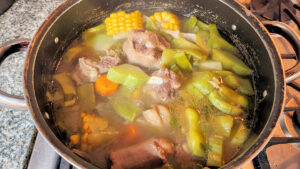
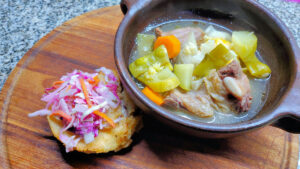
Hi! I am from El Salvador and I enjoy reading about our food here, just a question, Did you cooked the beans first? They need to be cooked before you send them to the blender.
Yes, the beans were cooked first – I’ve made refried beans before. Everything tasted great, the issue was in forming the pupusas, because the masa was too crumbly and kept falling apart.
If that the case, less water 🙂
Actually, I think it needed more water – it was too dry. But, I’m not sure, since I hadn’t made them before – and, in keeping with your thoughts, several of the recipes warned against making the masa too wet.